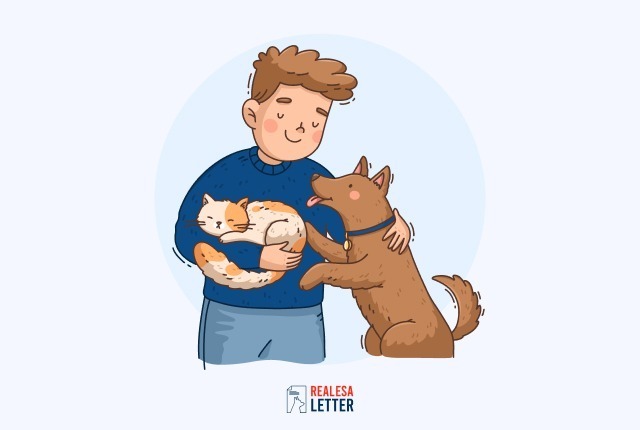Depression can feel like a heavy weight, making even the simplest daily tasks seem impossible. Getting out of bed, remembering medication, or even eating a meal can feel like climbing a mountain.
Over time, this constant struggle can deepen isolation and worsen symptoms, leaving you trapped in a cycle of fatigue and hopelessness. Even with therapy or medication, many people still find it difficult to manage the daily impact of depression.
This is where a psychiatric service dog (PSD) for depression can make a difference. Unlike pets, these highly trained dogs are specifically tasked to perform certain duties. They provide grounding during emotional lows and gently nudge you toward daily routines, offering practical support and renewed hope.
Let’s explore how a psychiatric service dog can help manage depression and provide stability when it feels out of reach.
How Can a Psychiatric Service Dog Help With Depression?
Depression often brings fatigue, loss of motivation, and emotional numbness. A psychiatric service dog (PSD) can help in three main ways:
Providing Daily Structure and Motivation
Depression often strips away energy and motivation. A PSD helps restore structure by:
- Nudging you to get out of bed in the morning.
- Encouraging you to stick to routines like exercise or eating meals.
- Offering cues that keep your day moving forward.
Offering Grounding and Emotional Regulation
A PSD can interrupt spiraling negative thoughts through tactile stimulation. This might look like pawing at you, resting its head on your lap, or applying gentle pressure therapy. These grounding actions can bring you back to the present moment during episodes of hopelessness.
Supporting Safety in Crisis Moments
For individuals who struggle with self-harm or severe depressive episodes, PSDs can:
- Interrupt harmful behaviors through touch or distraction.
- Retrieve safe objects to redirect your focus.
- Seek help if you become unresponsive.
Reducing Isolation and Loneliness
Depression often leads to withdrawal from friends, family, and social activities. A PSD provides constant companionship and encourages social interaction. Walking your dog, meeting other pet owners, or simply being seen with a service dog can reduce feelings of isolation.
Encouraging Responsibility and Purpose
Caring for a PSD gives you a daily purpose. Feeding, grooming, and exercising your dog creates responsibility, something depression often takes away. This sense of being needed helps many handlers push through difficult days.
What Tasks Can a Psychiatric Service Dog for Depression Perform?
Every PSD is trained based on the handler’s symptoms. Examples include:
Medication Management
These service dogs can remind you to take your medication on time by nudging or signaling you gently. In some cases, they’re trained to fetch your medication bottle or bring it directly to you. This consistent routine helps ensure you never miss a dose, supporting better overall health and stability.
Item Retrieval
When fatigue or low energy makes movement difficult, your service dog can bring essential items like water, snacks, or your phone. This simple yet vital assistance helps you stay safe, hydrated, and connected without straining yourself physically.
Morning Activation
Starting the day can be challenging during depressive episodes. These dogs are trained to pull your blanket, nudge your hand, or even bring clothing items to encourage you to get up. This small but powerful act helps establish a daily rhythm and promotes emotional engagement.
Sound Alerts
During moments of withdrawal or mental fog, service dogs can alert you to important sounds such as alarms, doorbells, or timers. This ability prevents missed appointments or safety risks, ensuring you remain responsive to your surroundings.
Grounding Responses
Grounding is one of the most powerful forms of emotional support. Through gentle touch, pressure, or sustained eye contact, these dogs bring you back to the present moment, easing feelings of panic, detachment, or hopelessness.
Deep Pressure Therapy
In times of high anxiety or distress, a service dog may apply deep pressure by lying across your lap or chest. This firm, calming pressure helps regulate the nervous system, reduce heart rate, and create a sense of security and calm.
Interrupting Ruminations
When repetitive or intrusive negative thoughts arise, the dog distracts you with a touch, nudge, or playful gesture. This redirection helps break harmful thought loops and encourages you to refocus on the present moment.
Blocking Unsafe Behaviors
Trained to recognize distress cues, these dogs can physically block self-harming or unsafe behaviors by positioning themselves between you and the source of harm. Their presence acts as both a barrier and a reminder of safety and care.
Crisis Response
In emergencies, service dogs can locate another person, activate an alert button, or bring a phone for help. Their quick and intelligent response ensures you receive timely assistance when it’s needed most.
How to Train a Psychiatric Service Dog for Depression
Training focuses on the specific challenges depression creates. Dogs are taught to recognize signs like stillness, crying, or changes in tone, and then respond with pre-trained actions.
Some handlers work with professional trainers, while others use hybrid approaches where they train their own dog under guidance. Regardless of the method, consistency and patience are essential.
The process is not just about teaching the dog. Handlers also learn how to communicate, reinforce positive behaviors, and manage their dog’s well-being.
1: Define Your Needs
Work with your therapist to identify the biggest challenges depression creates for you (e.g., motivation, safety, isolation).
2: Select the Right Dog
Choose a dog breed with a calm temperament, trainability, and size suitable for tasks like pressure therapy.
3: Begin Task Training
Start with obedience, then add depression-specific tasks such as nudging at alarm times or providing grounding.
4: Practice in Public
Gradually expose the dog to different settings so it learns to perform tasks in varied environments.
5: Ongoing Reinforcement
Keep reinforcing tasks, especially during low-energy days, so the PSD remains reliable even when depression symptoms are strongest.
Challenges of Having a PSD for Depression
While rewarding, the journey comes with challenges:
- Training requires patience and consistency.
- Depressive lows can make it harder to maintain routines for your dog.
- Not every dog succeeds in service work.
Still, many handlers say the benefits far outweigh the difficulties.
If a PSD isn’t feasible, some alternatives still provide emotional support:
- Emotional Support Animals (ESAs): Provide comfort but lack task training.
- Therapy Dogs: Visit hospitals or homes for structured sessions.
- Traditional Supports: Therapy, medication, support groups, and lifestyle changes.
A PSD works best when combined with these treatments, not as a replacement.
What Rights Does a Psychiatric Service Dog for Depression Have?
In the United States, psychiatric service dogs (including those trained for depression) are protected under the Americans with Disabilities Act (ADA). This gives them the same rights as guide dogs or mobility service dogs.
Key rights include:
- Public access: PSDs can enter restaurants, stores, public transportation, and other places where pets are banned.
- Housing rights: Under the Fair Housing Act (FHA), landlords must allow PSDs even in “no-pet” housing. No extra pet fees can be charged.
- Air travel: The U.S. Department of Transportation (DOT) recognizes PSDs as service animals. Airlines may require forms, but they must allow PSDs to travel in the cabin.
- Workplace accommodations: Employers covered under the ADA may need to provide reasonable accommodations to employees with PSDs.
When rights can be denied:
- If the dog is not housebroken.
- If the dog is aggressive, out of control, or poses a safety threat.
- If having the dog would fundamentally change the nature of the service or setting.
PSD for Depression vs ESA for Depression: What’s the Difference?
People often confuse PSDs with ESAs, but when it comes to depression, the differences directly affect daily support and legal rights. It’s important to understand the difference between a PSD and an ESA for depression before choosing the right one. Knowing the key distinctions in PSD vs ESA can help you choose the option that best supports your emotional well-being.
Feature | PSD for Depression | ESA for Depression |
Training | Trained to perform tasks (e.g., medication reminders, grounding, interrupting harmful behaviors) | No special training required |
Legal Protections | Full rights under ADA (public access, housing, air travel) | Protected only under housing laws (FHA); limited public access rights |
Purpose | Helps manage daily functioning and safety during depressive episodes | Provides emotional comfort and companionship |
Cost & Time | Requires structured training and ongoing reinforcement | Lower cost, easier to obtain with a letter from a licensed mental health professional |
Effectiveness | Task-based support plus companionship | Comfort only, no trained intervention |
Legal Documentation | Requires a PSD letter from a licensed mental health professional verifying the need for a psychiatric service dog | Requires an ESA letter from a licensed mental health professional confirming emotional support needs |
In conclusion, a psychiatric service dog for depression offers more than comfort; it restores independence and stability in daily life. These dogs are trained to perform specific tasks, from medication reminders to interrupting harmful behaviors, helping handlers regain autonomy and stability.
Research and real-life stories show that PSDs not only reduce depressive symptoms but also improve sleep, diet, and confidence.
Training takes time and patience, but the rewards often outweigh the challenges, especially when combined with therapy and support. Unlike ESAs, PSDs have full legal rights and provide task-based interventions, making them a stronger option for those living with major depression.
Pricing
PSD Letter
Reviews
ESA By States
ESA Laws
Resources




